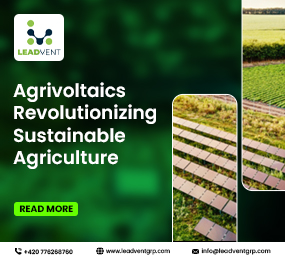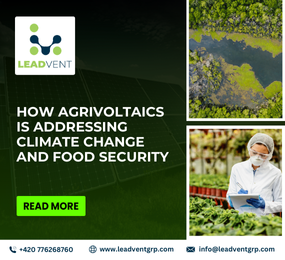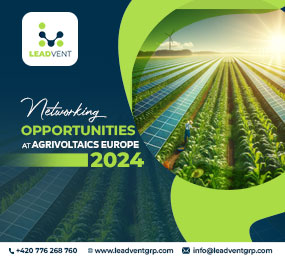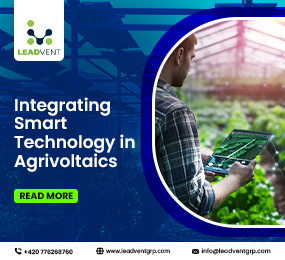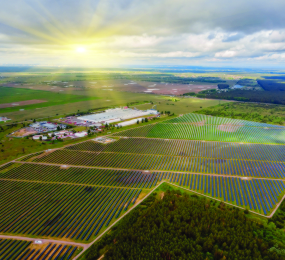In this era of growing consciousness, strategic utilisation of assets appears to be one of the most pivotal aspects that you can hardly evade. When it comes to agriculture, it becomes necessary to make the most out of the land and the intriguing part is that it helps in addressing two pressing challenges with ease like food scarcity and depletion of non-renewable energy. In such a critical scenario, AgriVoltaics comes in handy as it is all about maximizing land use by allowing farmers to grow crops while simultaneously harnessing solar power.
The growing interest of business enthusiasts and entrepreneurs all over the world is easing the process of widespread adoption of Agrivoltaics and diving deep into coming up with innovative solutions to social maladies. Here in this blog, we are going to delve into the amazing benefits of the Agrisolar projects and how it is heralding a prosperous future for the farmers.
Overview of Agrivoltaics Market
The global AgriVoltaics market has been undergoing significant growth in recent years and it is also contributing to the increasing demand for renewable energy. As per the recent statistical data, the global agrivoltaics market size was valued at around $3.6 billion to $5.45 billion in 2021-2023. From this statistical record, it is also projected that the market value is going to reach $7.96 billion to $12.7 billion by 2030-2031. However, this humongous growth of AgriVoltaics is not at all a radical incident, rather the dire need for food production, the prevalent scarcity of water and the pressure of the growing population are adding to the development of this innovative approach.
Advantages of Agrivoltaics
Like that of all other aspects, AgriVoltaics too has remarkable benefits that can be utilised strategically to pave the path for a bright future ahead. Predicting the growth of this innovative breakthrough, industry leaders and policymakers are going to solemnise a promising event, the 3rd Annual Agrivoltics Europe, 2024. This event, unlike other events, is going to throw light on the untapped areas of agriculture that can be later integrated with the power of Agrivoltaics to produce remarkable outputs. To divulge this sphere further, here have a look at the below pointers.
Improved Quality of Crop Yields
Contrary to popular belief, agrivoltaic systems can improve crop yields in certain environments. The strategic placement of the solar panels in the fields can offer complete shade to the crips and shield them from the harsh sunlight, flood and other natural hazards. This protection helps in maintaining optimal growing conditions, allowing plants to thrive without being affected by seasonal changes. Additionally, this shade aids in keeping the soil moist for longer, reducing the need for irrigation. Thus, the advanced usage of agrivoltaics in reality will save both the time and effort of the farmers.
Potential for Pasture-Based Agriculture
While most of the research has focused on agrivoltaics in cropland settings, recent studies have explored its potential in pasture-based agricultural systems. Integration of solar energy with sheep grazing, and agrivoltaics is taking part in improvement of the land use and efficiency without compromising animal production. These shaded areas created by the solar panels can provide a more favourable microclimate for grazing animals.
Enhanced Efficiency of Solar Panel
Agrivoltaic systems not only enrich the crops from within but also improve the performance of solar panels as well. Studies have also highlighted that agrivoltaic systems can generate up to 3% more electricity during the summer months compared to regular PV systems. In this process, it can be expected that in future, efficient usage of agrisolar practices will decrease the production of conventional electricity that is derived from fossil fuels.
Environmental Benefits
Agrivoltaics has in-store numerous environmental benefits, including reduced greenhouse gas emissions and the revitalization of rural areas. Generating renewable energy and promoting sustainable agriculture practices, agrivoltaics assists in mitigating the impact of climate change. Moreover, the integration of solar energy and agriculture can create business opportunities and uplift local communities from the state of distress.
Restoration of the Pollinator Habitats
Another amazing benefit of Agrivoltaics includes its role in restoring pollinator habitats. Incorporating native plants and pollinator-friendly vegetation into the design, agrivoltaics can create diverse ecosystems that are suitable for pollinators such as bees. For the resilience of the agricultural system, agrivoltaics is a must-have element and it has enough potential to strengthen this sphere as a whole.
Case Study
Viticulture Agrivoltaics Project in France by Sun’Agri
The Viticulture Agrivoltaics Project in France, led by Sun’Agri, represents a groundbreaking approach to integrating solar energy production for grape cultivation. At the heart of this project, there is the involvement of the patented technology that is shaping the quality of crops in general and the best part is that has optimised the light exposure that is essential for the growth of the plants.
FAQs
1) What types of crops are best suited for agrivoltaic systems?
Leafy green vegetables, tomatoes and peppers derive the most benefits from the agrivoltaic systems.
2) Is agrivoltaics economically beneficial for farmers?
Yes, agrivoltaics helps in diversifying the income stream of the farmers and improving their economic viability.
3) Can agrivoltaics help mitigate climate change?
Agrivoltaics contribute to the reduction of greenhouse gas emissions and enhance climate resilience at the same time.
Final Thoughts
The best agrisolar practices in recent times are opening up new avenues for high profitability, addressing the pressing challenges and preventing the process of depletion of natural resources. In a world that is striving to grapple with challenges like climate change and growing scarcity of food items, agrivoltaics emerges as the only ray of hope. For more insights regarding this approach or to join the 3rd Annual Agrivoltaics Europe, 2024, connect with Leadvent Group today.



